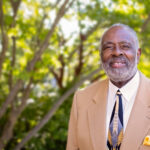Jon Fielder could’ve had a job anywhere.
He graduated summa cum laude from the prestigious Williams College, then with honors from the elite Baylor College of Medicine. He followed with a residency in internal medicine at Johns Hopkins University, where he was named the top intern in his class.
Fielder would have been “at the top of his profession in the United States,” said Mark Gerson, his college roommate who was doing just that—co-founding a successful peer-to-peer business learning community of top professionals.
But instead of courting hospitals and universities for job offers, Fielder was booking a plane ticket to Kenya. After graduation, he’d land at a missions hospital that didn’t have enough staff or supplies or funding. He’d work 10- to 12-hour days, spend a year away from his fiancée, and be on call in the intensive care unit for two years in a row without a substantial break.
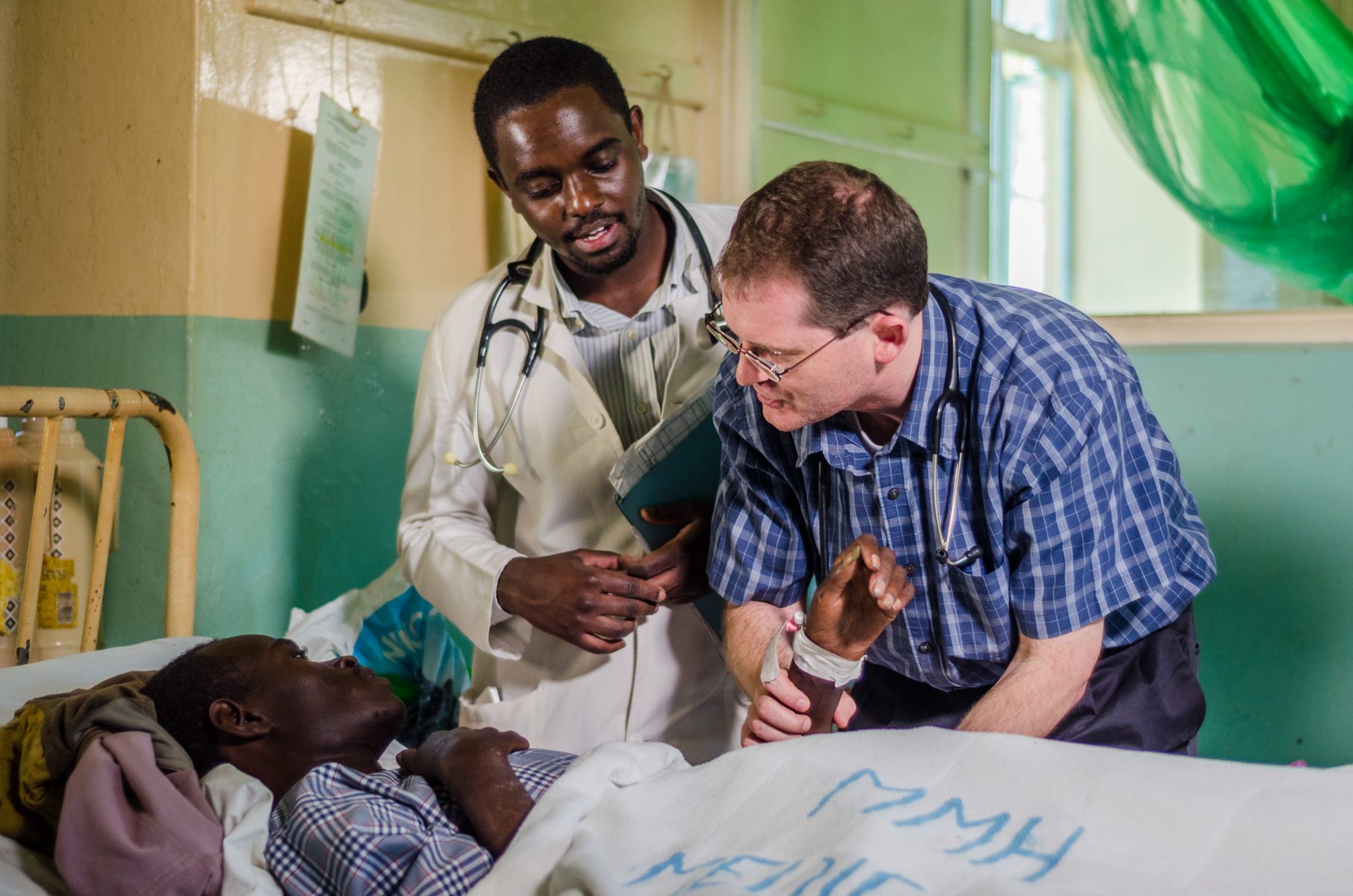
He’d work with a pharmacy that didn’t keep inventory and start an HIV program with staff who weren’t trained in HIV care. He’d do his continuing education not with conferences in Boston or New York, but with old school textbooks, and later with an internet connection and online journals. (“I once used an old textbook to mix peritoneal [abdominal] dialysis solutions for a patient whose kidneys had shut down as a complication from pregnancy,” he said. “She survived.”)
He’d face down the world’s biggest health crisis—HIV and AIDS—at its epicenter. And he’d work full-time in a hospital in Malawi while at the same time publishing more than a dozen articles and abstracts for medical journals, writing a textbook on how to deal with tuberculosis in HIV patients (the leading killer of most AIDS patients in Africa), and starting a foundation that would give away millions to other needy missions hospitals in Africa.
That foundation—the African Mission Healthcare Foundation (AMHF)—is perhaps the most surprising development of all. Because where is a missionary doctor, who has spent his entire career serving people who live in poverty, going to get millions of dollars to give away?
It isn’t that Fielder is a charismatic speaker or promoter, traveling around raising funds. (He’s more the type, when faced with recognition, to immediately suggest another doctor instead.)
But he does have that best friend from college—the devoutly Jewish Gerson.
Best Friends
When Gerson met Fielder their freshman year at Williams, he realized right away that Fielder “was the most morally serious and intellectually rigorous person I knew.”
Outside of class, Fielder was reading Commentary magazine, The Public Interest policy journal, and The National Interest magazine. (They cover and discuss political, cultural, and foreign affairs.)
“What he was reading and how he was thinking was different than anyone else our age,” Gerson said. “He introduced me to the world of serious ideas.”
Gerson also graduated summa cum laude. The two stayed in touch while Gerson went to Yale Law School and Fielder went to Baylor College of Medicine, where he came to Christ (“the result of soul searching and God convicting me of my sin”). Immediately serious about his faith, Fielder took a year off from med school to work with Mother Teresa’s organization in Calcutta.
“I had always been in the academic achievement lane,” Fielder said. “I really felt God saying to me that I needed to do something different.”
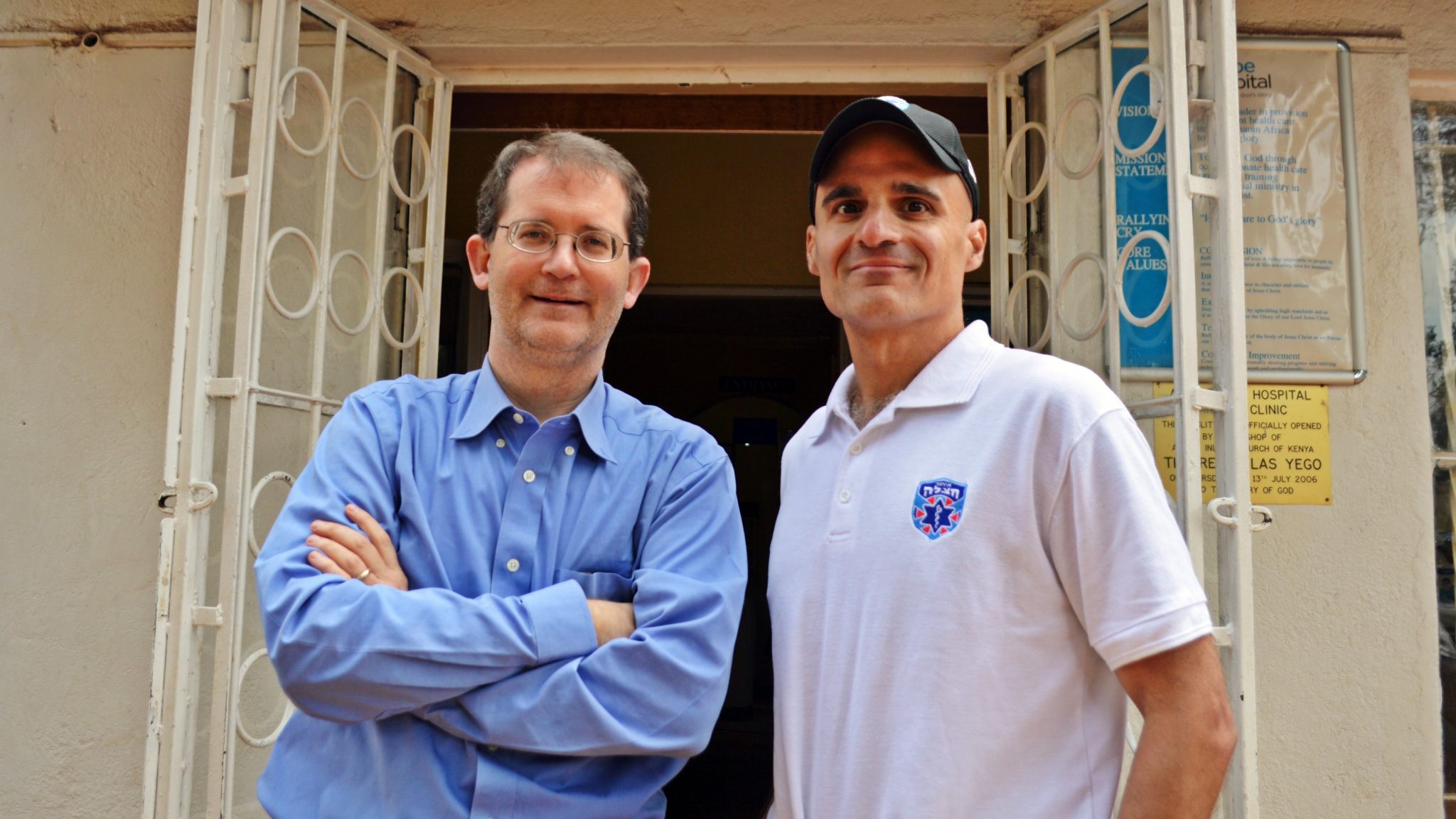
He returned to finish medical school and do a residency in internal medicine at Johns Hopkins. He hadn’t left the achievement lane—he was chosen as the best intern in his class—but now his energy was aimed in a different direction.
“I spent the long hours of my internship surfing missionary websites, such as they were—they weren’t that advanced back then,” he said. “I was looking for a place to go when I finished my training.”
He found one. A few months after he finished at Johns Hopkins, Fielder proposed to his girlfriend and (the next day) moved to Kenya.
“He called me and said, ‘I’m a Christian, and I’m called to go serve the poor in Africa,’” Gerson remembers. “I wasn’t surprised at all.”
Gerson was also immediately on board—“his donations to support HIV-infected patients at the hospital started before I even arrived,” Fielder told their alma mater.
The timing couldn’t have been better. Fielder specialized in infectious diseases, and Africa was racked with one of the worst. AIDS deaths worldwide would peak in 2005 at about 2 million; nearly three-quarters of them were in sub-Saharan Africa.
Pandemic
The first strains of HIV originated in Cameroon chimpanzees and made the leap over to humans in the 1920s. By the early 1960s, about 2,000 people were probably infected. By 1993, aided by the growth of the sex trade and public railways, the number had shot to 14 million; 9 million of them lived in sub-Saharan Africa.
By 2001, more than 20 million people south of the Sahara had AIDS.
Fortunately, by then pharmaceutical companies had invented antiretroviral drugs to manage the disease and prevent its spread. But only 8,000 sub-Saharan Africans had access to them.
In Kijabe, Kenya, a doctor named Nate Smith was working in a mission hospital with a population somewhere between 8 percent and 15 percent HIV-positive. Fielder wrote him a letter, asking, “Can I come out?”
Smith didn’t turn him down, but he also didn’t have a chance to train him. A week or so after Fielder arrived, Smith returned to the United States, leaving Fielder as the only hospital staff member who knew how to care for those with HIV.

The problem wasn’t knowing what to do (Fielder had trained for this) but accessing the right medicine. In 2000, the life-saving cocktail of antiretroviral drugs cost $10,000 per patient per year. In 2001, when generic companies began to offer them, the price dropped to $350. But that was still an impossible amount for a country where a third of the people survived on less than $1.25 a day.
So Fielder used Gerson’s donations to subsidize the cost of the drugs, asking patients to pay only what they could afford. He chipped away at the epidemic as best he could, planning to leave after two years.
But in 2004, just as Fielder’s two years were winding down, the President’s Emergency Plan for AIDS Relief (PEPFAR) funds reached Kenya.
“We really believed God was calling us to stay longer, because our hospital didn’t have anyone else to lead the PEPFAR program,” Fielder said. “We saw an opportunity and responsibility to be part of the scale-up.”
PEPFAR
During his 2003 State of the Union address, President George W. Bush asked Congress for “a work of mercy beyond all current international efforts” to “turn the tide against AIDS.” Congress gave him a standing ovation, then gave him $15 billion for antiretroviral treatments in 15 countries, 13 of them sub-Saharan. (PEPFAR was then renewed and expanded; to date, the United States has spent more than $70 billion on it.)
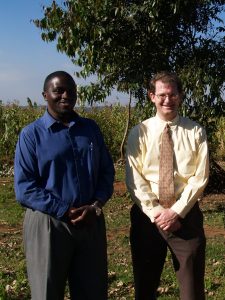
“Without PEPFAR most of [the HIV-infected patients] would have died,” said Jonathan Mwiindi, who came on as a pharmacist at Fielder’s hospital in 2003. “There is no way we could have gotten as many resources as it took to establish an HIV program, where the time spent in the hospital is small compared to the community identification, referral, and follow-up.”
It feels backwards, but it’s true. The millions of people dying from AIDS weren’t in a hurry to find a doctor.
“During the early days of PEPFAR, we were under pressure to find patients with HIV and get them treatment,” Fielder said. “You couldn’t just wait down at the hospital.”
Because to walk into a hospital and admit you have a virus that’s killing almost 7 percent of your country is not an easy thing to do. (Think of having to confess to being a zombie.) You’re risking social shame and isolation just for carrying the disease. And maybe you don’t even know medical help is possible.
Or—worst of all—maybe your pastor told you not to go.
Prosperity Preachers
On a Sunday in March 2001, 161 HIV-infected people went to hear pastor John Nduati. He called them to the front of church, where they fell down “like a row of dominoes when the pastor proclaimed them healed,” The New York Times reported.
Nduati isn’t the only one offering spiritual healing. The African charismatic Redeemed Christian Church of God tells its 2 million members that HIV is a “demonic spirit” that can be cast out. A Nairobi pastor leads people through a public “healing” that includes burning their antiretroviral medications and paying the pastor a hefty fee. A Zimbabwean “prophet” promises to heal HIV through his satellite broadcasts. And in South Africa, a prosperity preacher claims to heal church members of HIV by spraying insecticide on them.
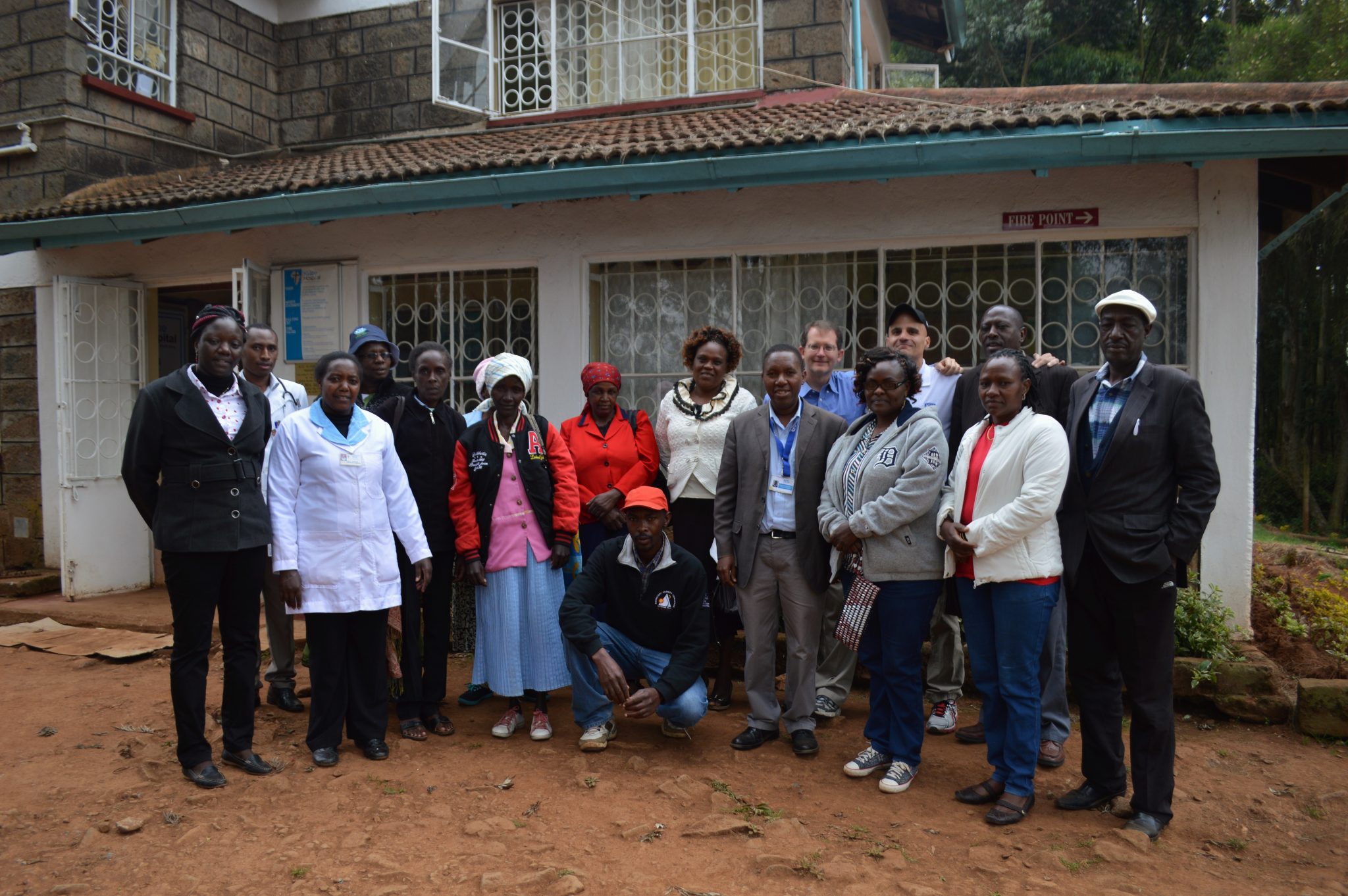
The effect can be devastating; not only does going off antiretrovirals mean patients aren’t managing the disease, but it also puts them at risk of developing a resistance to the drugs.
“We take it very seriously,” Fielder said. Prosperity gospel theology is “not a small challenge.”
Fielder and his staff closely monitor whether patients are coming in for refills. And he tells those infected, “God is working. He is healing you. These medicines came from somewhere, and not from the Devil.” He backs that up with James 1:17: “Every good and perfect gift is from above, coming down from the Father of heavenly lights.”
But the best answer to prosperity preachers has been gospel preachers.
Gospel Preachers
Stumped, Fielder looked around at other treatment programs and a network of Compassion International-affiliated churches in the region who were reaching out to infected parents. How were they pulling in those with HIV and keeping them engaged? The answer: community outreach and pastor involvement.
The chair of Fielder’s hospital board happened to be the leader of the regional pastors’ network, so he invited 150 of them to a three-day training to learn about the basic biology of HIV, the medicine, and the importance of sticking to a treatment schedule.
“This training session was the most important initiative we ever undertook in the community,” Fielder said. “The pastors and churches responded wonderfully. Many referred patients, sent sick cases in their own cars, held support groups in their churches, and led prayer and Bible study in support groups.”
“We went from 60 to 200 patients in one month,” Mwiindi said.

Fielder didn’t stop there. He and his staff developed a curriculum for pastors on their role during the treatment process. In two years, the number of people on antiretroviral drugs at Kijabe Hospital jumped from 120 to 1,800. It has since climbed to about 5,500. (One pastor referred so many patients Fielder had to ask him to slow down because the hospital couldn’t keep up. “I’m not sure he ever listened!”)
“It opened the floodgates because people go to pastors for advice,” Mwiindi said. “Once they get involved and engaged, it worked out beautifully. But we also had a very competent team, which Jon trained very well.”
In fact, he trained them so well that the hospital started a hands-on program that now certifies three-quarters of HIV healthcare providers in Kenya. So far, the one-to-four week curriculum has educated more than 2,500 in HIV care. (In 2011, Fielder added classes in recognizing and treating HIV-related tuberculosis.)
But while Fielder was solving one problem, he was noticing another.
Mission Hospital Neglect
“I spent a lot of time out in the community,” said Fielder, who traveled around Kenya helping other hospitals start HIV treatment programs. “I got to see a lot of different mission hospitals.”
He saw “the solid work people were doing, but also that a lot of the original missionaries had gone home, and people were trying to keep things together.”
They struggled to start treatment programs because they didn’t have clinics, or housing for staff, or space for labs, or trained personnel.
“I filed it away in the back of my mind—what can we do about these amazing places that should not be forgotten?” he said.
He kept thinking about it as he moved his family to Malawi to repeat the HIV education and training process at another mission hospital. And he thought about Gerson, who had been supplying “intellectual firepower and humbling generosity” this whole time.
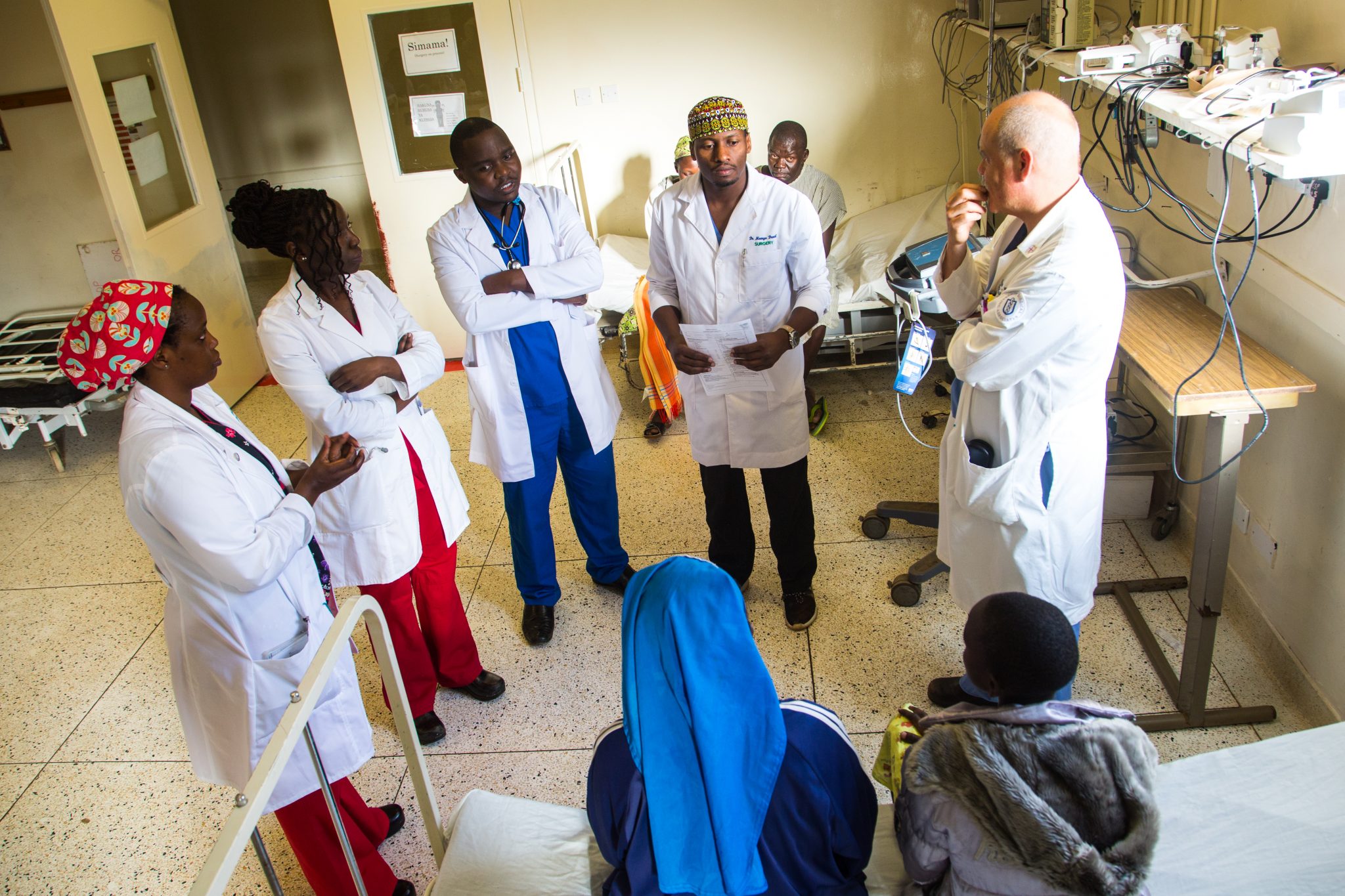
“Very few of the other missionaries have a group of friends like I do to help out financially,” Gerson remembers him saying. “They’re all doing extraordinary work in service to the poor, and they can’t market themselves a lot, because if they take a break from the hospital, vast numbers of people will have no doctor. . . . Let’s start a foundation that will provide that [financial] support.”
Mission hospitals are a perfect fit for donors—they’re institutionally built to last, and a little additional funding goes a long way.
“When you survive 100 years through war and poverty and epidemics and missionaries going home, and you still have your doors open, you prove you’re sustainable,” Fielder said.
But you aren’t thriving. Without money to update facilities or purchase new equipment, the old facilities and equipment eventually wear out. Unable to raise prices (if you do that, “people get turned away”), doctors can’t offer more than basic services or train anyone to cover for them after they’re gone.
Gerson wasn’t hard to convince. In 2010, the two former college roommates set up the African Mission Healthcare Foundation (AMHF).
African Mission Healthcare Foundation
About 11 percent of the world lives in sub-Saharan Africa. Many of them face sanitation and nutrition deprivation, which makes them vulnerable—they carry 24 percent of the world’s disease burden (and 60 percent of the AIDS burden).
At the same time, the region has just 3 percent of the world’s health-care workers. Part of this is the lack of medical training (there were only 169 identified medical schools in 40 sub-Saharan countries in 2012) and part is brain drain—skilled and educated African physicians often move to developed countries like the United States. The World Health Organization estimates Africa’s workforce deficit is 1.8 million health professionals.
People in sub-Saharan Africa carry 24 percent of the world’s disease burden (and 60 percent of the AIDS burden). Yet the region has just 3 percent of the world’s health-care workers.
Historically, much of sub-Saharan Africa’s medical care has been provided by missionaries and African Christians at church hospitals. Even now, 20 percent to 50 percent of health care is provided by faith-based medical centers. One Malawian official told Fielder that 70 percent of nurses in his country were trained by mission hospitals.
But as Christianity in Africa grows and indigenous leadership takes over, fewer Western missionaries are being sent. That change undermines mission hospitals in several ways.
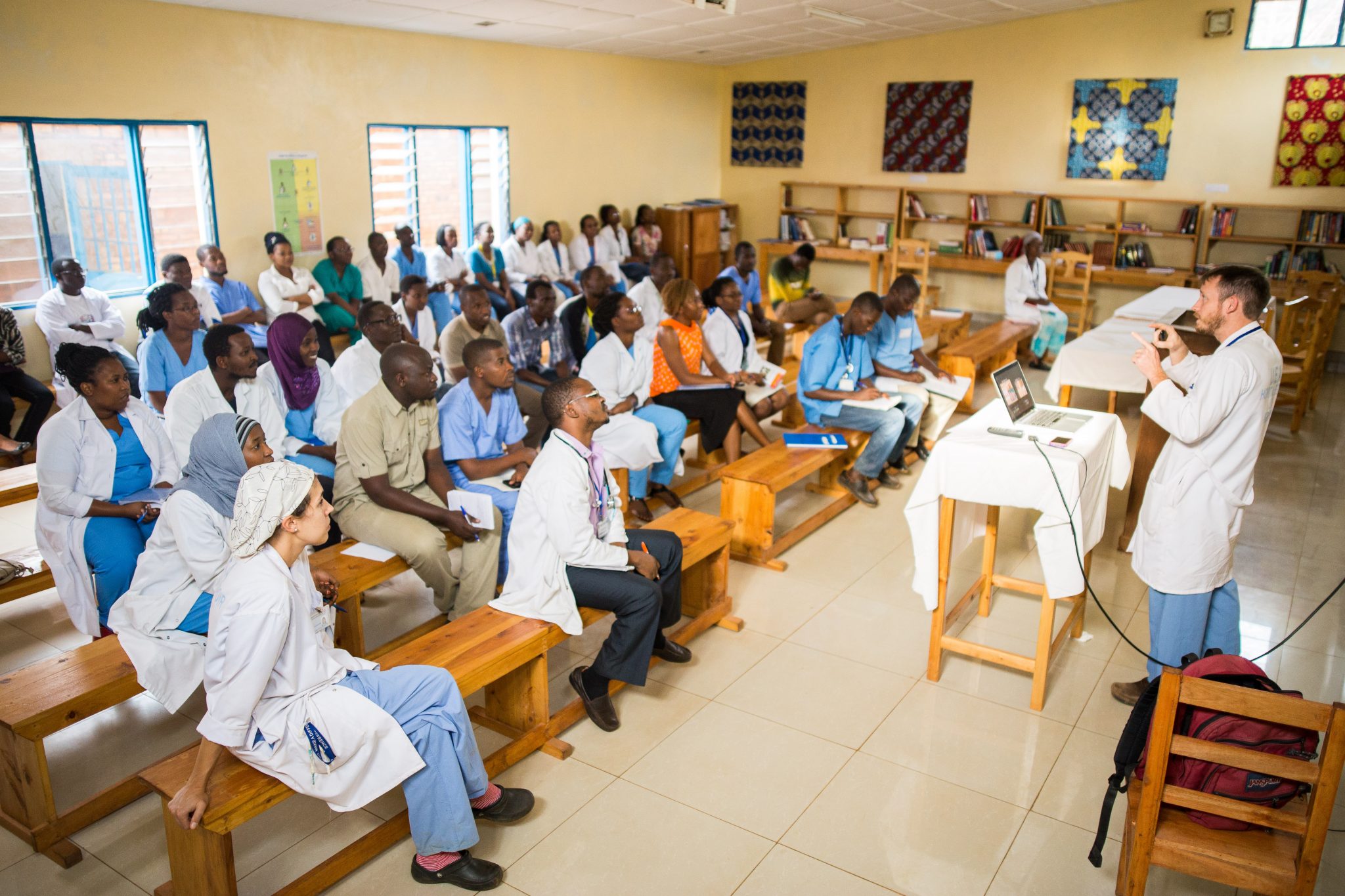
“A lot of these hospitals were built under the economic model that had free missionary labor in a lot of key positions for a long time,” Fielder said.
Many of those positions have since been transferred to Africans, but they don’t have outside financial support and need to be paid, he said. “Also, the African doctors don’t have connections to American or European churches. How do you replace medical equipment or find a way to send someone to medical school if you don’t have those connections?”
In the United States, the government or philanthropic organizations or pharmaceutical companies kick in.
But that doesn’t happen in rural Africa. There, you go without. The shoestring budget you run on gets skinnier and skinnier. When equipment breaks, you can’t replace it. When staff leave, you have no one to take their place.
That’s the gap that AMHF is stepping into. Over the past five years, Fielder and Gerson and their team have distributed $18 million to provide medicine and supplies, train doctors and nurses, and build better facilities.
Funding
Gerson and Fielder are both careful with money. Every AMHF expense is laid out publicly as it happens (earning it Guidestar’s highest seal of transparency). Since a donor covers operating expenses, 100 percent of every gift is spent on the field. Even the expected effect is carefully tracked—for example, the 20 nurses AMHF paid to train will see 1.6 million patients over their careers. The four surgeons will perform more than 40,000 surgeries.
Fielder is the boots-on-the-ground chief executive officer, and he’s serious about choosing longtime mission hospitals to partner with (they have worked with 38 in 16 countries). He spends about a third of his time traveling, often to check on their progress or assess their needs.
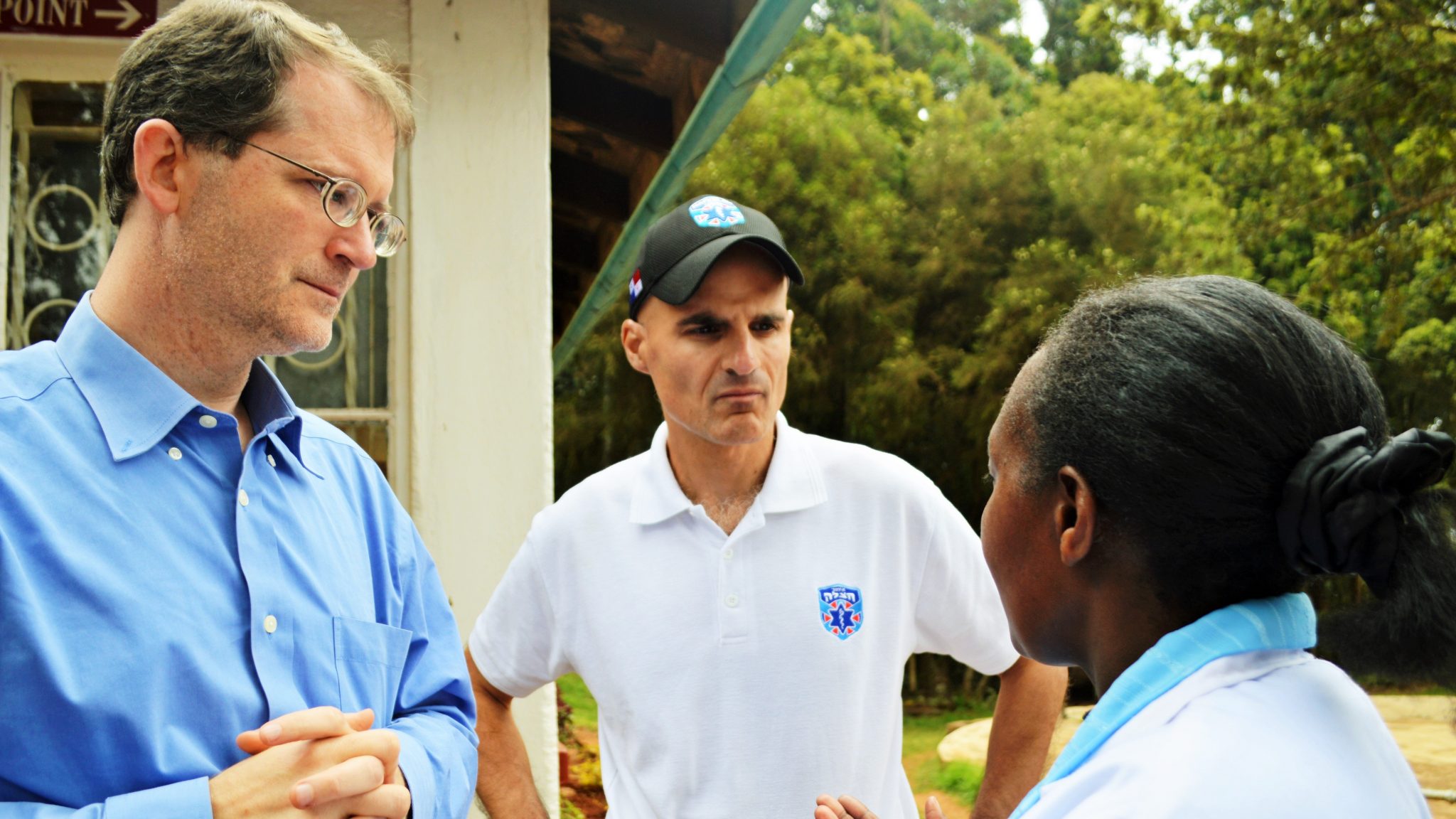
Gerson is the chairman, and serious about generosity. He spends a lot of time doing the networking and fundraising that AMHF doctors can’t. (So far, 3,100 people, churches, companies, and foundations have donated.) He’s only been to visit Fielder once in Africa, reluctant to spend money on a plane ticket that could be spent on medical care. And his checkbook is almost always open.
One example: the Gersons are partnering with the Christian Broadcasting Network to match $1 million in gifts to AMHF, turning it into a $2 million donation. And last year, Gerson and his wife created a $500,000 L’Chaim prize that picked up some media interest.
The first winner was Jason Fader, one of 13 surgeons in the country of Burundi, who is using the money to add beds to his hospital, create medical training, and improve care for leg fractures—crucial for a population that walks everywhere. This year cardiothoracic surgeon Russell White will use the money to train surgeons to repair heart valves that often scar from untreated strep throat.
Active Love
Had Fielder stayed in the United States, he would likely have commanded a superior salary. He’d probably work in a top-notch facility with skilled colleagues and a wide range of treatment options for patients.
In rural African medicine, “the challenges are tremendous,” he said. “Discouragement stems from witnessing so much early suffering and death, especially as a result of potentially treatable diseases. ‘Why was this condition not diagnosed earlier?’ ‘Why did it take so long for the family to bring the patient to the hospital?’ Because they had no money, of course.”
He’s been in hospitals—particularly government facilities—with severely limited resources. “We go on rounds and say, ‘If we had antibiotics, we’d use them here’ or ‘If we had an X-ray machine, we could check for tuberculosis.’ It can be totally demoralizing.”
In spite of all that, Fielder’s “energy and discipline are incredible,” said Mwiindi, who is now the vice president for programs at AMHF. He has known Fielder for 15 years. “He doesn’t work because he has nothing else to do, but because he’s driven to. All he sees is he’s where God wants him to be and where he can have the most impact.”
“He’s the best person I know—a man of deep faith with complete determination to serve God by serving his children,” Gerson said. “He makes you realize how much one person properly oriented can accomplish.”

Fielder bases his work on Matthew 25:31–46, Jesus’s story of sorting the sheep and the goats based on how they treated “the least of these my brothers” during life. When he gets discouraged, he holds onto a passage from Fyodor Dostoyevsky’s The Brothers Karamazov: “But I predict that even in that very moment when you see with horror that despite all your efforts, you not only have not come nearer your goal but seem to have gotten farther from it, at that very moment—I predict this to you—you will suddenly reach your goal and will clearly behold over you the wonder-working power of the Lord, who all the while has been loving you, and all the while has been mysteriously guiding you,” one character tells another.
Fielder is encouraged by the good work he sees.
“Church hospitals are truly owned by and embedded in local communities, are held accountable by their faith commitments and religious bodies, and have a higher purpose pointing to real hope and optimism—necessary characteristics for improving systems,” he said. “These institutions, like any human enterprise, are not perfect, but the mechanisms usually exist to correct error and improve, like in the church itself.”
The compassion and persistence of mission hospitals and doctors is “a powerful witness,” Fielder said. “Our partners contribute to the Great Commandment as well as to the Great Commission. Many minister in unreached areas or to unreached groups. The facilities nurture the Christian faith of their staff. And they show to all the love and compassion of Christ in a world too often devoid of simple mercy.”
Is there enough evidence for us to believe the Gospels?
 In an age of faith deconstruction and skepticism about the Bible’s authority, it’s common to hear claims that the Gospels are unreliable propaganda. And if the Gospels are shown to be historically unreliable, the whole foundation of Christianity begins to crumble.
In an age of faith deconstruction and skepticism about the Bible’s authority, it’s common to hear claims that the Gospels are unreliable propaganda. And if the Gospels are shown to be historically unreliable, the whole foundation of Christianity begins to crumble.
















